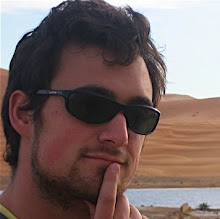Five days ago I left Cagalandia for good. My departure marked the end of 42 straight days of what I would consider "roughing it."
I am having to acclimate to sleeping in beds, using regular showers, being indoors, and not being able to pee anywhere, any time. Despite these practical matters, I largely attribute my "out of sorts" feeling to the fact that my activities are no longer so restricted by my surroundings. Freedom brings alternatives and demands decisions. What to do, what to eat, where to go...its a bit of a shock. I am still decompressing after what was in many ways a dramatic experience, and, despite several attempts, am not sure how to relate all that has transpired. I am stalling trying to process it all and so will just catch up on my recent travel. Pictures of Cagalandia are forthcoming.
After two straight weeks of rain, the sun came out, on Sunday, and I left. Thomas took me to town on the catamaran. At one point our left front tried to submarine, along with my bag, and I thought we were goners. He pulled us out of it, though, and I manned the jib as we landed without incident in Raul Marin. Early the next morning I took a minibus, a new service run by a local man, to La Junta, another tiny settlement slightly larger than Raul Marin. I spent the night at Tia Lety's Hospedaje and had a thrillingly hot shower, watched Spider-Man 2 and Yo, Robot in Spanish, chatted with Tia Letty about her arrival 30 years ago as one of the initial settlers of the village, and hung the contents of my bag all over the room in an attempt to dry these victims of the prior day's sailing trip.
At 5AM the next morning I hopped on another minibus to Coyhaique, capital of the Aisen region. It's a six hour ride along one of the world's wildest roads, the Carretera Austral, which lumbers unpaved through glacial river valleys beneath snowcapped peaks. For hundreds of kilometers you see nothing but landscapes, and then, amazingly, a city. Bursting out of an isolated and deserted countryside, Coyhaique boasts 50,000 residents, traffic lights, public transport, two supermarkets, a North Face store, and a beautifully designed public library where I now sit using free wireless internet. Despite its big-city aspirations, wilderness is still a walk away and wood-stoves reign.
I am using Coyhaique as a base from which to provision and plan for the next stage: continuation towards the southern tip of the continent. The weather has become a factor, as it is now the beginning of winter, and I want to take stock of what I can realistically do given my equipment and the conditions. Attempting to be intrepid and thrifty, I pitched my tent my first night here--I paid a nominal amount to a local hospedaje for use of the yard, kitchen, and bathroom facilities, but have since moved into the house. Despite the conditions, I have it stuck in my head that, being this close, I should go all the way. The next big stop is the epic Parque Nacional Torres del Paine, in summertime a trekkers Eden. Afterwards I will explore what I can of Chilean and Argentine Tierra del Fuego, probably bottoming out at Ushuaia.



